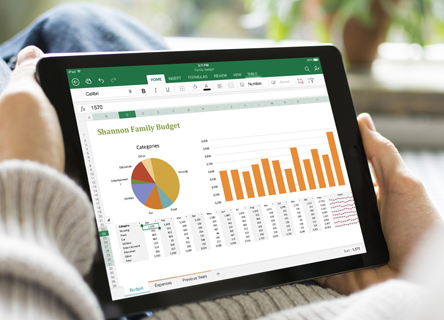Products are no longer the sole drivers of value for the consumers. The end-to-end customer experience is what modern customers now look for. The year 2020 has catapulted us to this new reality. Consumers are now more connected with businesses and always expect that they get what is promised, with the desired quality and on time. Covid-19 has highlighted the importance of supply chains in providing the desired customer experience. The world was brought to a standstill and the market dynamics changed - the way we do business was changed forever. The pandemic has forced companies to rethink their portfolio and segment the products into essential and non-essential, to ensure that the logistics for the segments are prioritized for on-time deliveries. Consumer behaviour has changed drastically now. Businesses must now deeply understand the needs of their customers and adapt the supply chain to match their expectations.
With the rapid evolution of digital technologies, consumers have now become increasingly connected with businesses than ever before. This in turn has opened up avenues for more data being readily available from various structured and unstructured sources, which can be analyzed to better understand the customer psyche and the bottlenecks in the supply chain. The term customer-centric broadly means doing things as per the customers - their requirements and their expectations. Companies can align their supply chain management effectively, once they understand their customers.
What is consumer connectivity?
Consumer connectivity means the integration of customers’ needs with the objectives of the company. Digitally deciphering the volumes of the supply chain data to deduce insights from it about the customer needs to serve them right and keep them motivated, is what sums up consumer connectivity. The more your consumers are connected with your business, the more loyal customer base you get, shooting up the profits and keeping risks at bay. With the rise of technology, it has become easy to automate data analysis and have insightful results on your fingertips.
Building up consumer connectivity depends on four types of consumer data:
Basic Data
Basic personal information of your customers which forms the basis of your understanding of your customers. customer’s name, email address, phone number, demographic data, annual income, etc, basic data comprises but is not limited to all this information. Basic data builds up the basis of customer segmentation. When aggregated and analyzed with proper tools, you can understand and visualize how many customers share common attributes.
Interaction Data
Interaction data refers to the engagement data that is extracted when customers interact with your brand on many touchpoints that they have with your company. It gives insight about the buyer journey with your brands. Interaction data can be in the form of page views, social media shares, reviews & rating, and much more. Analysis of interaction data helps to understand campaign effectiveness and return on advertising expenditure.
Behavioral Data
Behavioral data offers insight into customer experience with your products or services. It helps to understand the buying patterns and preferences. This can be used to understand customer preference and identify future trends.
Attitudinal Data
This type of data refers to data in the form of online reviews and surveys, user ratings on different platforms, etc, which tell you about the general satisfaction level of the customers and how happy they are with what you deliver to them. It’s important to extract data from a significant customer base since useful inference can’t be drawn from the views of just a few customers. Predictive analytics of the attitudinal data can help in building a loyal customer base by fine tuning the processes to deliver what is expected.
Consumer data can help the companies understand the psyche of their customers. It can give valuable insights into their buying pattern and what they expect from their products. At the strategic levels, the managers get better equipped to prepare plans and forecast the patterns for better decision making. The way we do business is now way different than it was ten years back.
Technological advancements have greatly influenced buyer behaviour and the dynamics of the industries. Getting into the depth of the situations, analysing patterns, understanding customer requirements, are the driving force of business these days. A better consumer supply chain connectivity can help improve logistics of how and when the products are delivered to the consumers. This can be a driver of growth and increased end-user satisfaction.
Need for customer-centric supply chain with changing customer expectations
Customer expectations have changed. They now want faster-than-ever deliveries at a cheap rate or even free. Infact, customer oriented innovations in marketing now primarily focus on how fast the products can be delivered at the doorsteps. Customers want real-time access to information by shipments, tracking details and even a direct contact with the retailers and delivery people so that shipments are never missed. With such exorbitant demands and an ever increasing pressure on the supply chain to deliver; the way forward can only be to make the supply chain more customer centric.
Going by recent researches, the numbers are quite obvious:
- 90% of customers track their order status online
- 75% of customers are unwilling to pay even for same day delivery, and
- 28% of customers are likely to cancel an order if it’s not delivered the same day
Supply chains play a crucial role in fulfilling these exorbitant customer expectations. It is needed that the supply chain is managed by pre-empting the customer needs and aligning the supply chain management with the latest trends and developments. Making this complex endeavor happen, is quite complex for Chief Supply Chain Officers. They need to strategize keeping customer demands in mind and adopt new supply chain strategies to put the customer at the center of their planning.
Harnessing the power of AI to turn data into consumer supply chain innovations
Big data has the capability of generating insights to develop a customer-centric supply chain which is dynamic enough to withstand any changes in the market. Artificial Intelligence enables leaders of today to become visionaries of tomorrow by understanding and proactively addressing the consumer needs. With plans starting to get formulated based on analysis of data and human error negated from decision making, plummeting profits and increased loyalty are bound to come.
In the past, supply chain management was just about delivering the right products to the consumers, intact. The customers were less demanding and the market dynamics was such that just a successful order delivery meant customer satisfaction and more business. Now, things have changed, but thanks to huge volumes of consumer data and the availability of the right technology to extract insights from it, customer-centric supply chains are here to deliver the right products and services throughout the country.




